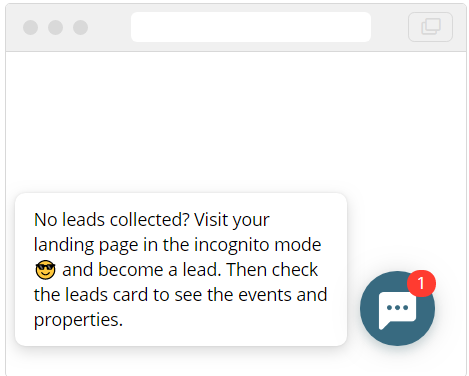How to make good onboarding: main tips and metrics

Highlights:
How to build a perfect onboarding strategy?
Embracing a Client-Centered Approach for Exceptional User Experience
What metrics to pay attention to?
This article was prepared by Helen Korpula, marketing manager at Dashly.io.
Let me tell you the story about myself. I am willing to get some “so-so” design skills throughout the time of my conscious experience. Once my willingness got so strong that I downloaded one software for design, let me call it just “X”. So I installed it, opened, signed up (spent about half an hour already), and here it is - my first board for design and masterpiece creation. And then I went like “Well… Hmmm…. Arghh…” for two hours. Then deleted this software forever.
Why did that happen? Because I didn’t understand how to deal with this product and how to get the value out of it.
It’s all about onboarding, ladies and gents.
Why do you need onboarding?
Onboarding is a process of user’s exposure to your product. It helps the user to understand the product’s value. But it is not just about teaching users what buttons to push. Good structured onboarding shows the maximum value a product can bring and lays a foundation for upsales and a long customer lifetime.
Sixteen Ventures researched that a user who doesn’t receive any profit from the product during the first engagement (first session) will leave the product during 30-90 days. And I really doubt this user will ever come back. They already snuggle in competitors’ products with cool onboarding.
And here’s a little bit of harsh statistics of companies without onboarding:
- You lose 75% of new users during the first week;
- 40-60% of your trial users will sign in one more time and never again;
- More than ⅔ of SaaS companies have more than 5% churn rate.
First session is really important. It creates the initial impression and determines whether a user is going to use your product. Good onboarding not only educates users during the first session and tells them how to work with the product. It also involves users into the product advantages and is able to retain users.
In general, that’s what you get for making a good onboarding:
- Less churn: tell your users how much easier their life will become with you, and they will never leave.
- Happy customers: those who know what they pay for are happy to pay over and over.
- More new users: word of mouth will work perfectly well if your product is intelligible - referrals have the power.
- Higher effectiveness: you’ll get less “how to” questions, will be able to focus on improving the product instead of pushing users from trial to payment and will become happier having happy users who know how to use your product.
How to build a perfect onboarding strategy?
Half-assed onboarding sometimes may be worse than its total absence. Imagine tons of randomly popping pop-ups, importunate tips and links to longreads in a Knowledge base… Brr.
Effective onboarding means carefully thought-out strategy, understanding product’s key features and a deep analysis of how your users behave during the first sessions - what they do first, what moment is the hardest one and where the AHA moment is.
Step 1: Identify Your Objectives
Before creating an onboarding program, you should identify your objectives. What do you want your new hires to learn during their onboarding experience? What skills do they need to develop? What metrics will you use to measure their progress?
We in Dashly carried out a big research on how our users behave. We ran a cohort analysis, were looking at people’s behavior using Fullstory and Dashly itself, looked at conversion rates from step to step using funnels and consolidated this info all together. And as a result, we’ve built an onboarding using pop-ups, chat messages (like the one on the picture) and emails with several milestones to help our users get the feel of the product.

Step 2: Develop a Comprehensive Plan
Develop a comprehensive onboarding plan that includes orientation, training, and ongoing support. This plan should outline what information new hires need to know who they need to meet, and what resources are available to them. Also, don't forget to trace users clearly—you have to know who they are, what their companies are, what they like, what they definitely won’t understand and what may seem like hardships for them.
Step 3: Use Multiple Formats
Use a variety of formats to deliver information during onboarding. I know I’ve said that thousands of times, but really—show them the value. Every step of the onboarding should palpably bring users to the purpose they had when signed up. So don’t let any severities get in their way to receiving the value. The formats may include videos, webinars, face-to-face meetings, and e-learning courses. This will help accommodate different learning styles and ensure that all new hires receive the information they need.
Step 4: Encourage Socialization
Encourage socialization during the onboarding process to help new hires feel welcome and connected to their team. This may include team-building activities, lunches, or after-work events. This also means that you should always keep in touch with the people.
We really recommend adding some emails to the first steps of your onboarding, because emails are checked more oftenly that your product’s admin panel. Remind about yourself in emails, motivate to go back to the product and finish setting it up to reach the goal afterwards.
Even later, when tips inside the product will lead users along the way, don’t forget about emails (but do know when to stop). Tell about new launches and share pieces of advice on how to use your product. But please, don’t shower users with emails, let them live for some time without you. Sending emails once a week is enough.
Step 5: Track Progress and Measure Success
Track new hires' progress during the onboarding process and measure success using metrics such as productivity, engagement, and retention rates. Use this information to continually improve your onboarding program.
Embracing a Client-Centered Approach for Exceptional User Experience
Designing and optimizing products that genuinely resonate with users is paramount in today's competitive landscape. By adopting a client-centered approach, you can create a remarkable user experience that aligns with each individual's unique goals and aspirations. This approach involves empowering users to define their moments of success and milestones while ensuring their progress is visible and celebrated.
- Create client-centered goals
Each user is individual. Let your users detect their moments of success and milestones themselves, but the progress should be clearly seen—let users know they’re using your product for a purpose.
- Aim to impress
Thy to do everything so your product will leave a pleasant impression after every user contact, a desire to continue working with it, pay for it and tell every person they know about Your Awesome Product. Keep an eye on the productivity and maintain the product’s flawless operation.
- Track onboarding statistics, detect bottlenecks and improve them
Collect feedback from users, check the main metrics and please don’t let chips fall where they may - if you see that conversion rates don’t change (or even fall), make some changes!
What metrics to pay attention to?
- Churn rate
One of the main metrics. Churn rate is the number of users who abandon using your product for any reason.

- Lifetime value (LTV)
It is a profit you receive from one user during the whole period of their work with your product. Acquisition rate? of one user shouldn’t be higher than this user’s LTV.

- Customer retention rate
This metrics helps to detect reasons of churn. Check at what period of user lifetime your retention rate is the lowest and work on that bottleneck.

- Net Promoter Score (NPS)
One of the loyalty signs is users’ willingness to recommend your product. Onboarding creates a positive experience for your users and improves NPS.

All in all, onboarding is a very powerful instrument in capable hands. Don’t stick your neck out and don’t make thousands of pop-ups, emails, tips and so on. Spend some time on research, structure it and mark out the most important points - AHA moments, key features, bottlenecks where the most users drop out and have a clear understanding of WHO your users are and WHAT value they need to get.


